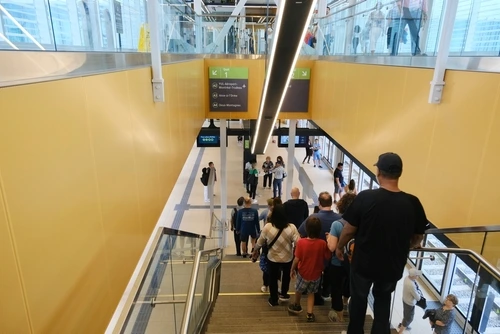
Montreal commuters geared up over the weekend to witness the launch of the city’s new light-rail train. This ambitious infrastructure project promised to reshape the way residents and visitors navigate the city, offering a more efficient, sustainable and comfortable mode of public transit, despite being several years late and millions of dollars over cost.

The light-rail project, known as the Réseau Express Métropolitain (REM), has been eagerly awaited since its announcement several years ago. It was developed by the Caisse de dépôt et placement du Québec (CBDQ), and operated by CDPQ Infra, a subsidiary dedicated to infrastructure projects.
The REM is a large undertaking, comprising an extensive network that will span approximately 67km and 26 stations, connecting key areas within the city and its suburbs.
Light rail goes green
One of the most striking features of Montreal’s light-rail train is its emphasis on sustainability. The REM aims to significantly reduce greenhouse gas emissions by encouraging people to opt for public transportation instead of private cars. With its electric-powered trains and advanced energy-efficient systems, the REM is expected to have a substantially lower carbon footprint compared with traditional diesel-powered trains and buses.
The REM’s design also prioritises passenger comfort and convenience. Its more spacious train carriages are equipped with modern amenities, including air conditioning, Wi-Fi connectivity, and charging stations for electronic devices. Moreover, the trains will be accessible to individuals with reduced mobility, ensuring inclusivity.
Montreal for profit
While the REM project has brought some economic benefits to Montreal and the surrounding regions, with the construction of the light-rail train having generated numerous job opportunities, boosting employment and contributing to the local economy, some have warned against the dangers of privatisation of public transit infrastructure.
The improved transportation infrastructure is expected to stimulate real estate development, attracting businesses and residents to areas along the train route. This urban renewal could lead to increased property values and further economic growth, though it could have the same effect as London’s Crossrail (the Elizabeth Line) and raise prices high enough to push local residents out.
[Read more: Why Montréal is doubling down on public transport]






